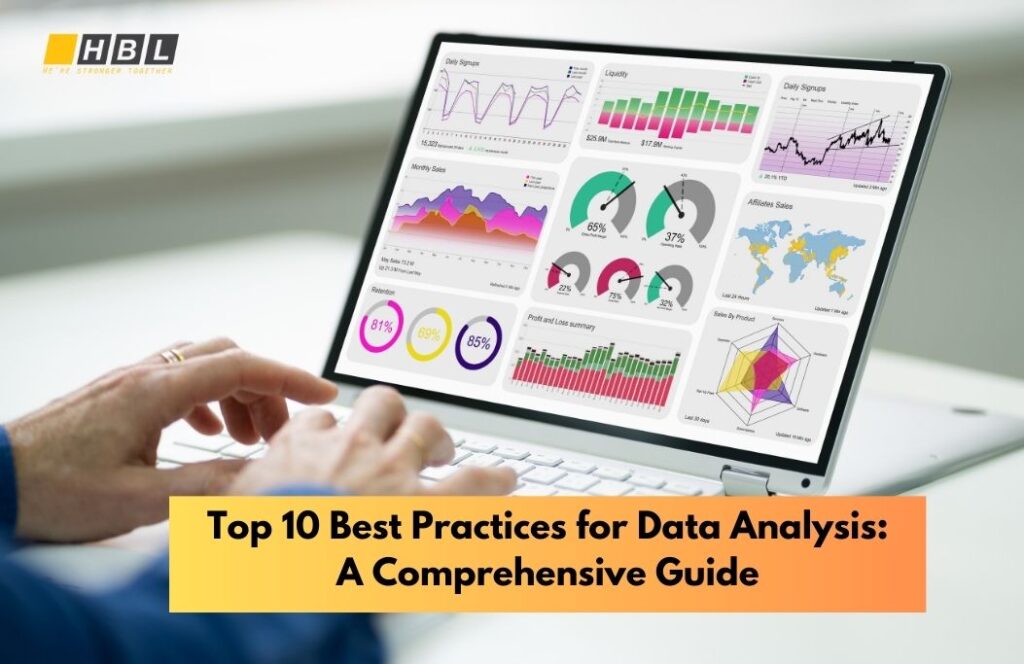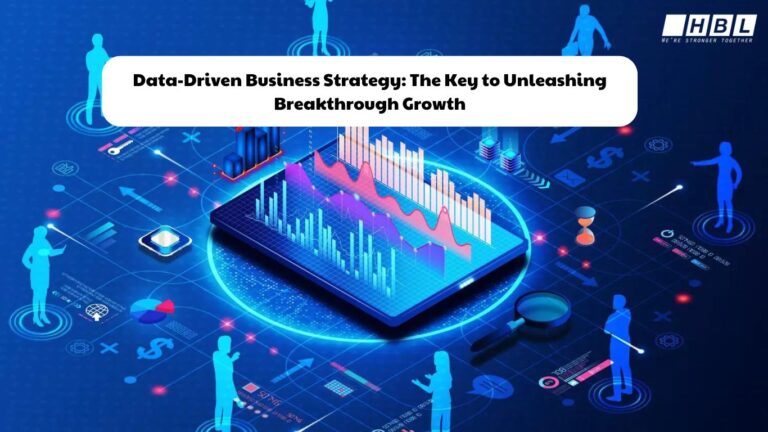In today’s digital age, data is the new oil, a valuable resource for all sectors. Data analysis, the key to unlocking this treasure, has become crucial for strategic planning and development. From business and healthcare to finance and scientific research, examining, processing, and interpreting raw data allows us to better understand the world and make informed, effective, evidence-based decisions.
However, adhering to best practices is vital for transforming data into useful insights. Proper analytical techniques enhance the quality and reliability of results, prevent errors and inaccurate conclusions, and optimize data’s problem-solving and value-creation potential. Therefore, understanding and applying best practices in data analysis is increasingly critical.
First, let’s explore what Data Analysis is and why it is important!
What is Data Analytics, and Why Is It Important?
Data analysis isn’t just about processing data; it’s an art of uncovering hidden values within vast amounts of information. Like refining precious metals from raw ore, it requires a blend of technique, tools, and sharp analytical thinking. The process involves multiple complex stages: collecting, cleaning, transforming, and interpreting data, all aimed at producing deep insights, meaningful trends, and patterns that underpin strategic decision-making. In a world increasingly dependent on data, data analysis has transcended from being a mere technical tool to becoming a “compass” guiding development in all fields.
From business, finance, and healthcare to education and scientific research, data analysis plays a crucial role in optimizing performance, enhancing competitiveness, and driving innovation. Its power lies not just in understanding the past and present, but in opening doors to the future. By identifying patterns, predicting trends, and detecting hidden correlations, data analysis enables organizations to proactively adapt to market changes, seize opportunities, and minimize risks.
For example, in business, data analysis helps understand customer behavior, personalize experiences, optimize supply chains, develop new products, and craft effective marketing strategies. However, to fully harness the power of data analysis, applying scientific methodologies and advanced analytical tools is essential. Additionally, human elements are vital; data analysts must possess critical thinking, creativity, and communication skills to clearly and convincingly convey insights extracted from data to stakeholders.
Essential Guidelines for Effective Data Analysis
Let’s dive into 15 top methods for big data analysis that can help you confidently navigate the data landscape. These include focusing on specific goals, choosing high-quality data, using pivot tables, and more. Detailed information is discussed below.
1. Focusing on specific goals
Clearly defined goals bring a strong sense of purpose and direction to data analysis projects. Without concrete objectives, data analysis can become aimless, leading to irrelevant or excessive data collection, wasting time and resources. This practice also enables organizations to measure the success of their data analysis initiatives. By setting clear, quantifiable goals, such as increasing sales conversion rates by 10% or reducing production costs by 20%, it becomes easier to assess the impact of data-driven strategies. These measurable results help evaluate the return on investment and the effectiveness of data analysis projects.
2. Choose High-Quality Data
Data quality plays a crucial role in generating accurate insights and supporting effective decision-making. Accurate and reliable data is the foundation for any analysis, from marketing to finance.
For example, in marketing, accurate data on customer behavior helps optimize advertising campaigns and avoids wasting budget on misguided strategies.

Furthermore, high-quality data ensures consistency and comparability, allowing integration with other data sources and analysis over time to identify trends, patterns, and important changes. In finance, accurate historical data is crucial for reliable forecasting and risk assessment.
3. Understand the Context
Data is influenced by the factors and conditions present in its surroundings. To interpret it accurately, you must understand the context in which it was collected. This includes the conditions, processes, and circumstances that may have influenced the data. A thorough understanding of the context can prevent misinterpretations and ensure that conclusions are valid.
4. Data Visualization
The use of charts, graphs, and other visual tools helps transform raw numbers into easy-to-understand images, making the data analysis process more intuitive and accessible. When data is presented visually, patterns, trends, and relationships between variables can be identified more clearly and quickly, allowing users to grasp information effortlessly. Additionally, data visualization plays a crucial role in detecting anomalies or inaccuracies, prompting new questions, and ultimately accelerating and improving decision-making processes.
5. Handling Missing Values
Missing data is a common issue in datasets, and the way these gaps are addressed can significantly impact the accuracy and reliability of the analysis. To ensure that these voids do not compromise the integrity of the results, effectively handling missing values is crucial. One of the main reasons for addressing missing values is to minimize bias and distortion in the data. If not managed properly, missing values can lead to inaccurate outcomes, especially in sensitive fields like healthcare, where patient records may be incomplete.

6. Normalization and Standardization
Normalization and standardization are two important methods in data analysis, especially when data features have different units or scales. These techniques help bring all attributes to a common scale, making it easier to compare and analyze. Additionally, they improve the performance of machine learning algorithms, such as support vector machines and k-means clustering, by allowing these models to converge faster and produce more accurate results.
7. Apply Statistical Analysis for Deeper Insights
Basic data inspection often isn’t enough to uncover deeper insights. Statistical methods, such as regression analysis, hypothesis testing, and correlation analysis, can reveal hidden relationships within your data. Correlation analysis can show whether two variables move together, which can be crucial for identifying root causes of business issues. Statistical analysis provides a more nuanced understanding, helping you to predict outcomes, validate hypotheses, and make data-driven decisions with greater confidence.

For example, statistical analysis in technology provides deeper insights through various methods. Descriptive and inferential statistics help summarize data and validate findings, while A/B testing assesses product performance.
8. Use Machine Learning Algorithms
Machine learning (ML) goes beyond traditional analysis by learning from the data and making predictions or identifying patterns that would be difficult to detect manually. Machine learning algorithms, such as clustering, classification, and deep learning, have the capability to analyze extensive datasets and reveal intricate patterns.. For instance, a recommendation system in e-commerce relies on ML to suggest products based on user behavior and preferences. Applying the right algorithms can help automate processes, predict outcomes, and improve accuracy in data analysis.
9. Segment Data for Granular Analysis
Data segmentation involves dividing datasets into smaller, more manageable subsets based on certain criteria like demographics, behavior, or location. This allows for more detailed insights and helps identify trends that might be masked when looking at the data as a whole. For example, segmenting customers by age, purchasing behavior, or location can help businesses understand which groups are driving sales and tailor marketing campaigns accordingly. Effective segmentation leads to more personalized strategies, such as targeted advertising, that resonate better with specific audiences.
10. Apply Real-Time Data Analysis When Needed
In today’s fast-paced world, waiting for data analysis results can mean missed opportunities. Real-time data analysis allows businesses to act on data as soon as it’s generated, making it especially useful for industries like finance, retail, and logistics, where conditions change rapidly. For example, e-commerce platforms use real-time data to adjust prices, manage inventory, and deliver personalized experiences to customers. Technologies like Apache Kafka and Spark Streaming can process live data streams, enabling companies to make quick, informed decisions based on the most current information.
11. Integrate Multiple Data Sources for Comprehensive Analysis
Analyzing data from a single source might not provide a complete picture. Combining data from various sources, like CRM systems, social media analytics, sales records, and market research, can enrich your analysis and offer more comprehensive insights. For example, integrating customer feedback from surveys with social media sentiment analysis can provide a more nuanced understanding of brand perception. Data integration helps break down silos, ensuring that decisions are based on a holistic view of the data landscape.
12. Choose Scalable Data Storage Solutions
As your business grows, so does the amount of data you need to manage. Scalable data storage solutions like cloud-based platforms (Amazon S3, Google BigQuery, Microsoft Azure) are essential for handling large datasets efficiently. These platforms offer flexibility, allowing you to scale storage up or down as needed, and often include built-in tools for processing and analyzing data. Scalable storage ensures that your infrastructure can grow with your data needs, preventing bottlenecks and ensuring cost efficiency.
13. Implement Advanced Data Security Measures
Data security is a crucial aspect of handling big data. Implementing advanced security measures, such as encryption, user authentication, access controls, and regular security audits, ensures that sensitive information is protected. Data breaches can lead to legal penalties, loss of customer trust, and significant financial losses. Following best practices in data security also ensures compliance with regulations like GDPR, CCPA, and HIPAA, which mandate stringent standards for data protection…
14. Perform Predictive Analytics for Future Planning
Predictive analytics involves using historical data to make forecasts about future events. By applying techniques like regression models, time series analysis, and machine learning algorithms, businesses can predict trends and behaviors. For example, retailers use predictive analytics to anticipate which products will be in high demand during certain seasons. This helps businesses plan inventory, marketing, and logistics strategies more effectively, allowing them to stay ahead of the competition.
15. Communicate Findings Clearly and Effectively
Finally, the most sophisticated analysis won’t be useful if stakeholders can’t understand it. Present your findings in a clear, concise manner using visuals and storytelling. Create reports and dashboards that highlight key insights, supported by data visualizations that make complex information easier to digest. Use storytelling to connect the data to business goals, making the insights actionable. Tailor your communication to your audience, ensuring that both technical and non-technical stakeholders can understand and act on the results.
FAQ About Practise for Data Analysis
Here are some common questions about Practices for Data Analysis that you may find helpful:
What are the four most important concepts in data analytics?
The four core pillars of data analytics are essential components that help organizations effectively collect, process, analyze, and utilize data to make informed decisions. These pillars are:
- Data Collection: This is the foundational step where raw data is gathered from various sources. It can include structured data from databases, unstructured data from social media, sensor data from IoT devices, and more. The quality and relevance of the collected data are crucial, as they directly impact the accuracy of the analysis.
- Data Processing: Once the data is collected, it must be cleaned and transformed into a usable format. This involves removing duplicates, correcting errors, and converting data into a consistent structure. Data processing also includes integrating data from multiple sources, which helps create a comprehensive dataset for analysis.
- Data Analysis: This pillar focuses on exploring and interpreting the processed data to extract meaningful insights. Various analytical techniques, such as statistical analysis, machine learning, and data visualization, are employed to identify patterns, trends, and correlations. The goal is to turn raw data into actionable insights that can inform business strategies.
- Data Visualization: Effective communication of insights is vital for decision-making. Data visualization involves presenting data findings in a clear and visually appealing manner, using charts, graphs, dashboards, and reports. This helps stakeholders easily understand complex data and make informed decisions based on the insights provided.
Is it possible to apply a data analysis framework?
Yes, it is absolutely possible to apply a data analysis framework, and doing so can significantly enhance the effectiveness and efficiency of data-driven decision-making. Here are key points to consider when applying a data analysis framework:
- Define Objectives: Start by clearly outlining the goals of the analysis. Understanding what you want to achieve will help guide the entire process, ensuring that the analysis remains focused and relevant.
- Select the Right Framework: Various frameworks are available, such as CRISP-DM (Cross-Industry Standard Process for Data Mining), KDD (Knowledge Discovery in Databases), and the Data Analysis Lifecycle. Choose one that aligns with your project requirements and organizational context.
- Gather and Prepare Data: Collect the necessary data from relevant sources. Ensure that the data is clean, consistent, and structured properly for analysis. This can include tasks such as cleaning data to ensure accuracy, transforming it to fit specific analysis needs, and merging data from different sources for a unified dataset.
- Conduct Analysis: Utilize appropriate analytical techniques and tools to explore the data. This could involve statistical analysis, machine learning algorithms, or other methods tailored to your objectives.
- Interpret Results: Analyze the findings to derive meaningful insights. This step involves critical thinking to understand the implications of the data and how it relates to your initial objectives.
- Communicate Findings: Present the results in a clear and understandable format, using visualizations and reports that highlight key insights. Effective communication is crucial for stakeholders to grasp the findings and make informed decisions.
- Implement Actions: Based on the insights gained, take action to drive improvements or changes in strategy. This may include operational adjustments, policy changes, or further investigations into specific areas.
- Evaluate and Iterate: Finally, assess the outcomes of the implemented actions. Determine whether the objectives were met and if adjustments are necessary. This evaluation phase allows for continuous improvement and refinement of the analysis process.
By following a structured data analysis framework, organizations can ensure a systematic approach to data-driven decision-making, ultimately leading to more informed strategies and outcomes.
See more:




